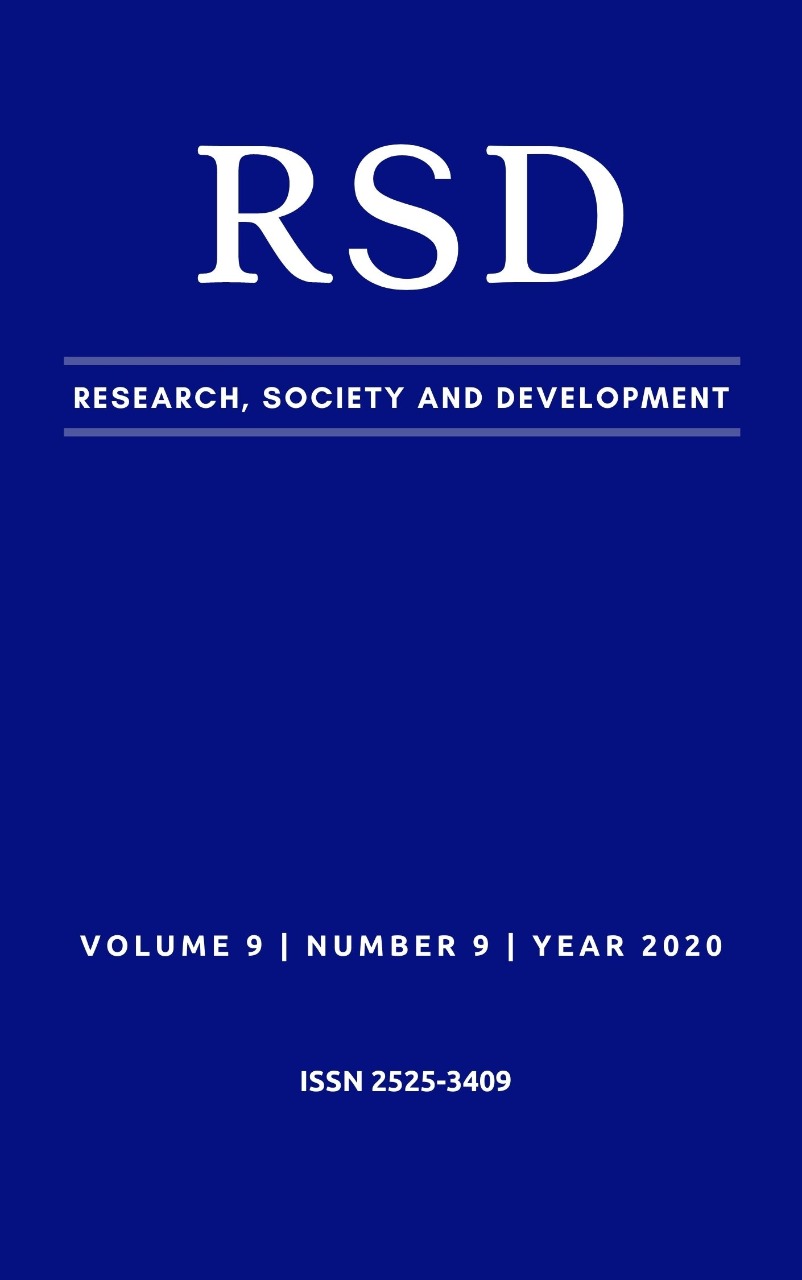Advance in the characterization of alambic cachaça: ethyl lactate
DOI:
https://doi.org/10.33448/rsd-v9i9.7116Keywords:
Secondary components, Esters, Aroma, Alembic cachaça.Abstract
In the current methodology for the analysis of cachaça, the limit of 200 mg/100 mL ethanol established in Brazilian legislation for the totality of esters present in cachaça is measured exclusively by the dosage of ethyl acetate, the principal ester in cachaça produced on an industrial scale (continuous distillation), whose asepsis procedures applied to the broth are focused on combating the activity of bacteria. However, it is known that producers of alembic cachaça (batch distillation) ferment the fresh juice, which naturally incorporates lactic bacteria from the environment. A survey of the analysis records of 300 samples, corresponding to 110 cachaça brands, was performed. The analyses were performed using the recommended laboratory methods and gas chromatography. The extensive occurrence of ethyl lactate was found in varying proportions, but with the same order of magnitude as ethyl acetate. It was concluded that, in addition to the olfactory peculiarities related to the particular contents in each brand, the simple presence of ethyl lactate (above a level that can be referred to as traces) permits one to infer whether the cachaça originates from alembic or from industrial production.
References
ABNT (Associação Brasileira de Normas Técnicas) (1997). Aguardente de cana. Determinação do teor alcoólico. NBR 13920.
Brasil (2005a). Ministério da Agricultura, Pecuária e Abastecimento. Instrução Normativa no 13 de 29/05/2005. Aprova o Regulamento Técnico para fixação dos padrões de identidade e qualidade para aguardente de cana e para cachaça.
Brasil (2005b). Ministério da Agricultura, Pecuária e Abastecimento. Instrução Normativa no 4 de 08/09/2005. Aprova o Manual Operacional de Bebidas e Vinagres.
Batt, C. A. & Tortorelli, M. L. eds. (2014). Encyclopedia of Food Microbiology. 2ed. Amsterdam, Netherlands: Elsevier.
Charalambous, G. (1994). Food Flavors: Generation, Analysis and Process Influence. New York, NY: Elsevier.
Cole, V. C. & Noble, A. C. (1994). Flavour chemistry and assessment. In: Lea, A. G. H. & Piggott, J. R. (1995). Fermented Beverage Production. London, England: Blackie Academic and Professional.
Duarte, M. C. K. H.; Cortes, N. M. S.; Sloboda, M. A. & Franco, R. M. (2013) Ação antagonista de bactérias láticas frente ao crescimento de estirpe patogênica. Enciclopédia Biosfera, 9, 25-36.
Ganzle, M.G.; Weber, S. & Hammes, W. P. (1999). Effect of ecological factors on the inhibitory spectrum and activity of bacteriocins. Int. J. Food Microbiol., 46, 207-217.
Hove, H.; Norgaard, H. & Mortensen, P. B. (1999) Lactic acid bacteria and the human gastrointestinal tract. Eur. J. Clin. Nutr., 53, 339-350.
Kurtboke, I. (2017). Microbial Resources: from functional existence in nature to applications. London, England: Academic Press.
Maarse, H. (ed) (1991). Volatile compounds in foods and beverages. New York, NY: Marcel & Dekker.
Maia, A. B. R. A. (2019) Aromas da cachaça. Belo Horizonte, LABM, (Texto explicativo que acompanha kit para análise sensorial de componentes específicos da cachaça). Retrieved June 20, 2020 from www.labm.com.br.
Maia, A.B.R.A. & Campelo, E.P. (2006). Tecnologia da Cachaça de Alambique. Belo Horizonte, Brasil: Sebrae-SindBebidas.
Maia, A. B. R. A. (1992). Fermentação alcoólica em Saccharomyces cerevisiae: desenvolvimento de um processo contínuo e novas concepções sobre a formulação de meios. Belo Horizonte, Brasil, ICB-UFMG. (Doctors Thesis).
Nascimento, E. S. P.; Cardoso, D.R. & Franco, D.P. (2008). Quantitative ester analysis in cachaça and distilled spirits by gas chromatography-mass spectrometry (CG-MS). J. Agric. Food Chem., 56, 5488-5493.
Nykanen, L. & Suomalainen, H. (1983). Aroma of beer, wine and distilled alcoholic beverages. Berlin, Germany: Akademie Verlag.
Oliveira, F. F.; Diniz, R. H. S.; Santos, F. G.; Piló, F. B.; Mezadri, H.; Castro, I. & Brandão, R. L. (2015). The role of yeast and lactic acid bacteria in the production of fermented beverages in South America. In: Eissa, A. A. Food production and Industry. doi: 10.5772/60877.
Piggott, J. R. & Patterson, A. (1989). Distilled Beverage Flavour: Recent Developments. Chichester, England: Ellis Horwood.
Qian, M. C. & Shellhammer, T. H. (2013). Flavor Chemistry of Wine and Other Alcoholic Beverages. New York, NY: American Chemical Society.
Sanchez, I. G. Sualdea, B. B.; Arribas, M. V. M. (2019). Chapt. 6 -Malolactic Fermentation. In: Morata, A. (Ed). Red Wine Technology, New York, NY: Academic Press, pp. 85-98.
Smid, E. J. & Kleerebezem, M. (2014). Production of Aroma Compounds in Lactic Fermentations. Ann. Rev. Food Sci. Technology, 5, 313-326.
Sobczak, W. Z.; Wróblewska, P.; Adamczuk, P. & Silny, W. (2014). Probiotic lactic acid bacteria and their potential in the prevention and treatment of allergic diseases. Central Eur. J. Immunology, 39(1), 104 -108.
Ventura, R. (2007). Quantificação do ácido lático na fermentação etanólica como parâmetro de monitoramento do processo. Rio Claro, São Paulo: UNESP.
Downloads
Published
Issue
Section
License
Copyright (c) 2020 Amazile Biagioni Maia; Lorena Simão Marinho; David Lee Nelson

This work is licensed under a Creative Commons Attribution 4.0 International License.
Authors who publish with this journal agree to the following terms:
1) Authors retain copyright and grant the journal right of first publication with the work simultaneously licensed under a Creative Commons Attribution License that allows others to share the work with an acknowledgement of the work's authorship and initial publication in this journal.
2) Authors are able to enter into separate, additional contractual arrangements for the non-exclusive distribution of the journal's published version of the work (e.g., post it to an institutional repository or publish it in a book), with an acknowledgement of its initial publication in this journal.
3) Authors are permitted and encouraged to post their work online (e.g., in institutional repositories or on their website) prior to and during the submission process, as it can lead to productive exchanges, as well as earlier and greater citation of published work.


